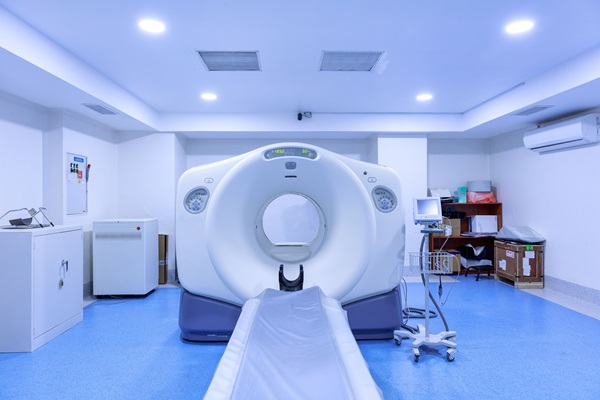When Should You Visit a Walk-In Clinic?

Walk-in clinic provide convenient, accessible health care for non-emergency medical needs, making it an ideal choice when immediate attention is necessary. Understanding when to visit a clinic can help patients save time, avoid unnecessary trips to the emergency room, and receive quality care for their health concerns. These clinics handle various issues, offering fast, professional treatment without patients needing to schedule an appointment ahead of time.
What is a walk-in clinic?
A walk-in clinic is a healthcare facility that offers treatment for non-life- or limb-threatening conditions and minor injuries. Unlike emergency rooms, reserved for serious medical emergencies, walk-in clinics provide a more cost-effective and efficient option for addressing everyday health issues. Patients can visit these clinics for a wide range of concerns, from minor illnesses to routine medical services.
Walk-in clinics comprise a team of qualified medical practitioners experienced in treating common ailments and injuries. These facilities often have extended hours, making them a convenient choice for individuals needing care outside regular office hours.
When to choose a walk-in clinic
Visiting a walk-in clinic is appropriate for non-emergency medical needs that require prompt attention. Common reasons for seeking care at a walk-in clinic include minor illnesses like colds, flu, or sore throats. These clinics are also equipped to handle various infections like ear infections, urinary tract infections (UTIs), or sinus infections. A walk-in clinic is also ideal for minor injuries, such as sprains, strains, or small cuts that may need stitches. Many clinics also offer services like X-rays to assess fractures or other injuries.
In addition to treating illnesses and injuries, walk-in clinics provide preventive care and routine services, such as vaccinations, physical exams, and screenings. For example, patients can receive flu shots, school physicals, or basic lab tests without waiting for an appointment. Walk-in clinics are especially helpful when a primary care provider is unavailable, such as in the evenings, weekends, or holidays. They fill the gap by offering reliable care when scheduling an appointment with a regular provider is not possible.
When to choose a hospital
While walk-in clinics are ideal for many medical needs, it is important to recognize when a situation requires the resources of an emergency room. Severe chest pain, difficulty breathing, sudden weakness, or symptoms of a stroke demand immediate attention at an emergency department. Similarly, emergency medical professionals should treat major injuries, uncontrolled bleeding, or severe burns in an appropriate setting.
Usually, walk-in clinics are not equipped to handle life-threatening conditions or situations that require specialized equipment and care. Knowing the difference between emergency and non-emergency conditions ensures patients receive the appropriate level of care in a timely manner.
Benefits of visiting a walk-in clinic
Walk-in clinics are essential to the healthcare system, offering fast, affordable, and reliable care for non-emergency situations. They bridge the gap between primary care providers and emergency rooms, ensuring patients can access timely medical attention. Walk-in clinics offer several advantages, including shorter wait times compared to emergency rooms. Because they address non-emergency issues, patients can often receive treatment more quickly.
Another benefit is affordability. Treatment at a walk-in clinic is typically less expensive than a visit to the emergency room, making it a practical option for individuals without insurance or those looking to minimize out-of-pocket costs. Convenience is another major factor. Walk-in clinics allow patients to receive care without needing an appointment, making them a great option for unexpected health concerns or busy schedules. Their extended hours provide additional flexibility, ensuring patients can access care when needed.
What to expect during a visit to a walk-in clinic
Patients can expect a straightforward and efficient process when visiting a walk-in clinic. Upon arrival, staff will gather basic information, such as medical history and symptoms. A qualified practitioner will then evaluate the condition and recommend appropriate treatment. They may perform basic diagnostic services, such as blood tests, urine tests, or X-rays, to aid in diagnosis and treatment. Treatment may involve a prescription, minor procedures, or advice on managing symptoms at home. The practitioner may recommend follow-up care with a primary provider or refer the patient to a specialist for more complex cases.
Stop by Texas Urgent Care & Imaging Center to address your concerns
By offering convenient, high-quality care without needing appointments, walk-in clinics play a vital role in helping individuals maintain their health and well-being. Whether for a minor illness, injury, or routine service, walk-in clinics are a valuable resource for addressing everyday healthcare needs. Stop by Texas Urgent Care & Imaging Center during our operating hours to receive quality care.
Request an appointment here: https://tx-urgentcare.com or call Texas Urgent Care & Imaging Center at (832) 941-1894 for an appointment in our New Caney office.
Check out what others are saying about our services on Yelp: Walk-In Clinic in New Caney, TX.
Recent Posts
X-rays are popular tools medical professionals use to diagnose a wide range of health conditions quickly and safely. They allow these professionals to see inside the body without invasive procedures, making them invaluable in urgent and primary care settings. Whether identifying fractures, monitoring chronic conditions, or detecting abnormalities, X-rays are critical in ensuring timely and…
A CT scan, or computed tomography scan, is a diagnostic tool that provides detailed images of the body’s internal structures. This non-invasive procedure helps medical professionals diagnose and monitor various conditions, from injuries to chronic illnesses. Knowing what to expect during a CT scan can ease concerns and prepare patients for a smooth experience.A CT…
If you work in public transportation, you may need to have a DOT drug screening. The Department of Transportation (DOT) regulates this test and requires it for you. You might be wondering what this test is like. Keep reading to learn more.Congress passed the Omnibus Transportation Employee Testing Act in 1991. Congress knew that the…
Walk-in clinics provide minor illness treatment for patients seeking quick and effective healthcare to address their symptoms. These accessible facilities address non-emergency medical concerns without the need to wait days for the next available appointment. The following guide will review some of the most common minor illness treatments offered at walk-in clinics.Respiratory tract infections (RTIs)…


